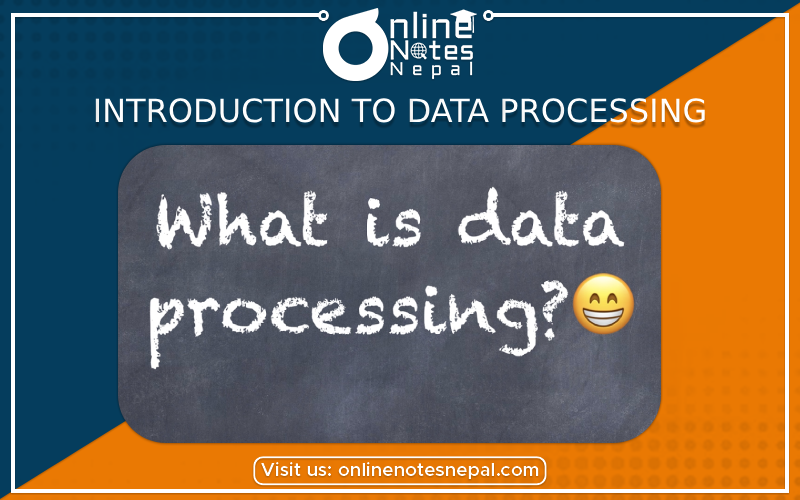Published by: Anu Poudeli
Published date: 01 Aug 2023

Data Processing Fundamentals
Data processing is a basic concept in information technology and computer science. It refers to the process of converting raw data into valuable information. Several processes are involved in the process, which converts data into a more intelligible and structured format, allowing for easier analysis, interpretation, and decision-making.
1.Data collecting: Data collecting is the initial step in data processing. This entails collecting raw data from a variety of sources, such as sensors, questionnaires, databases, or online platforms. Text, numbers, photos, audio, and video are all examples of data.
2.Data Cleaning: Raw data frequently contains errors, inconsistencies, and missing information, which can impair analysis accuracy. Data cleaning is the process of discovering and resolving these flaws in order to ensure data quality.
3.Data Transformation: Data may need to be transformed before it can be analyzed. Converting data kinds, normalizing numerical numbers, and encoding categorical data are all examples of transformations.
4.Data Storage: Once the data has been cleaned and processed, it must be formatted for simple retrieval and processing. For this purpose, databases and data warehouses are often employed.
5.Data Analysis: The next stage after data processing is data analysis. Various statistical, mathematical, and machine learning techniques are used to extract insights, discover patterns, and generate predictions from data.
6.Data Visualization: Understanding trends and patterns rapidly requires the ability to visualize data through charts, graphs, and other graphical representations. Data visualization assists in communicating complex information in a more accessible and understandable manner.
7.Data Interpretation: The interpretation of the results acquired from analysis and visualization is the final step in data processing. The data that has been evaluated is used to develop conclusions, make decisions, and support strategic planning.
Data processing It can be done with a variety of tools and programming languages, including Python, R, SQL, and specialist software such as Excel, Tableau, or Apache Hadoop. Data processing has become even more important in extracting relevant insights from enormous and complicated datasets with the advent of big data and advances in data science.
Data processing is essential in a variety of fields, including corporate intelligence, scientific research, healthcare, finance, social media analysis, and many more. As technology advances, data processing processes will improve, allowing corporations and individuals to benefit.